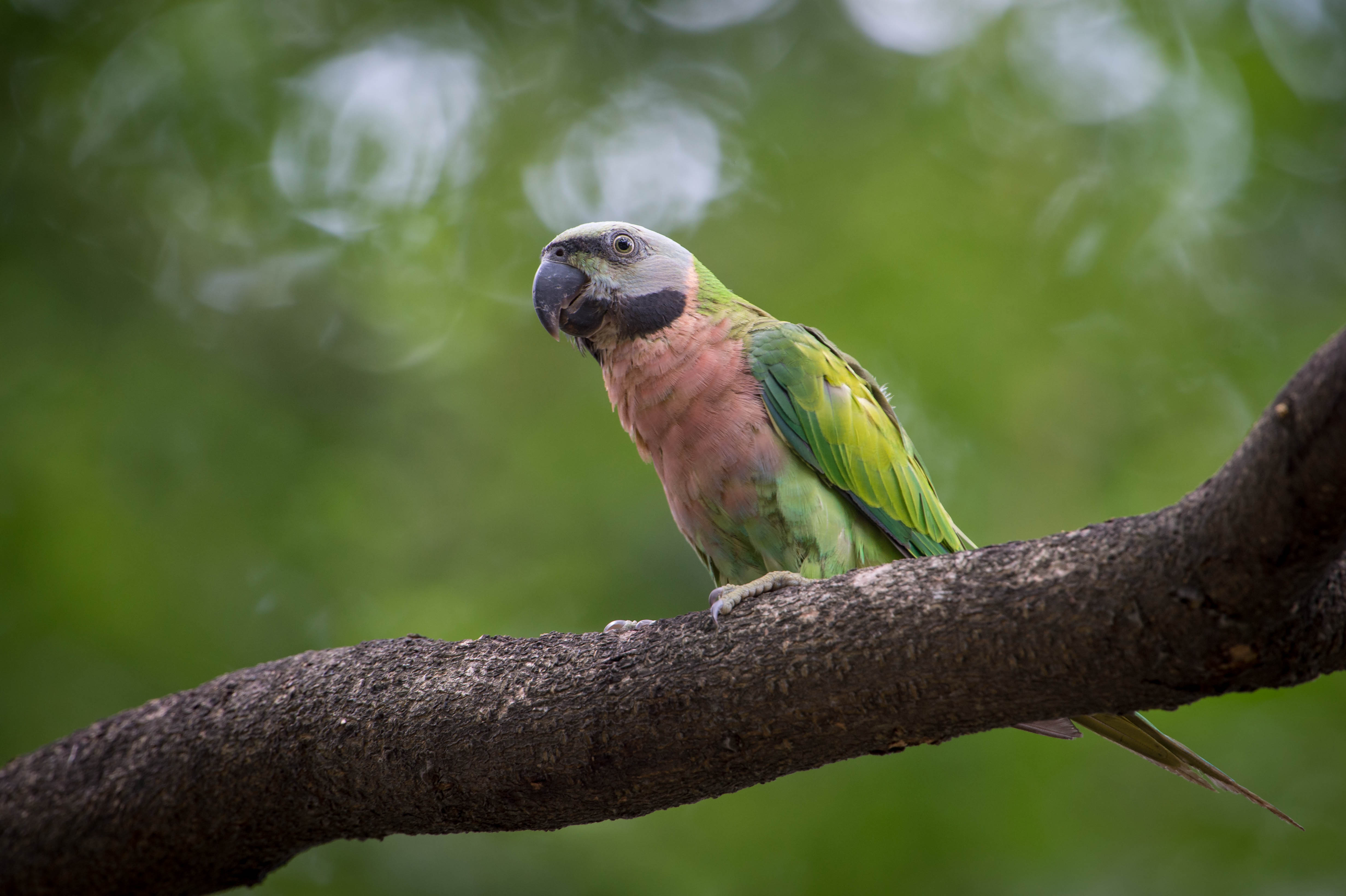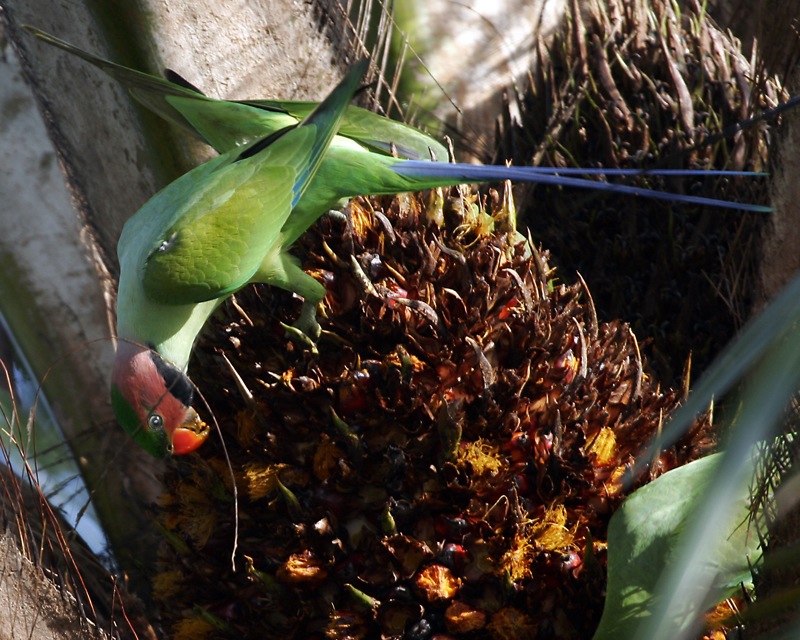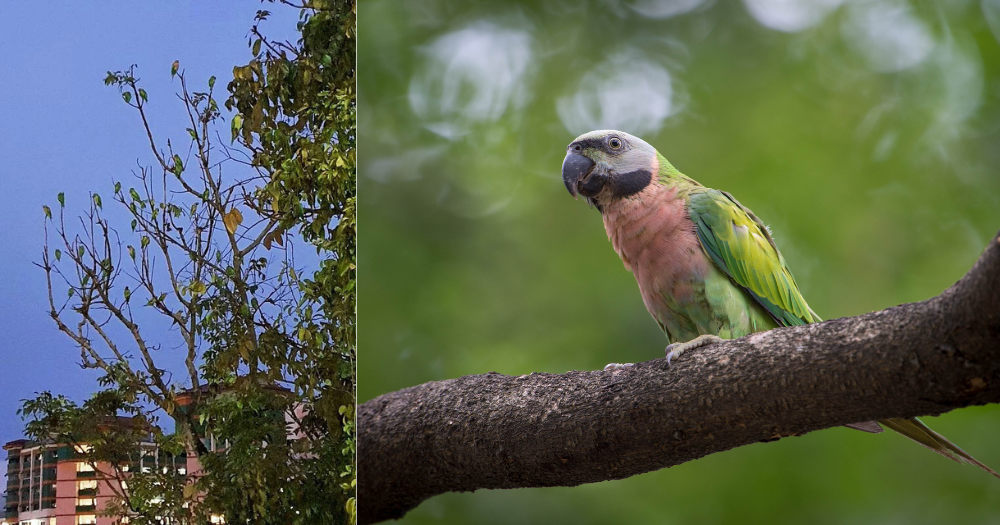If you visit Choa Chua Kang on mornings or evenings, you might chance upon flocks of red-breasted parakeets in flight around the estate.
The birds, introduced into Singapore's ecosystem through their release or escape from captivity, has thrived in the wild locally.
To manage their numbers, the National Parks Board (NParks) is working with the Choa Chua Kang Town Council to carry out tree pruning, Minister for National Development Desmond Lee said in response to questions raised in parliament on Sep. 18.
The question was raised by Member of Parliament (MP) for Chua Chua Kang GRC Zhulkarnain Abdul Rahim.
The MP asked the minister about NParks' plans to ensure that the emergence of non-native species like the red-breasted parakeets do not adversely affect local biodiversity and habitats in the long term.
Red-breasted parakeets a common sight in Choa Chu Kang
The colourful birds have become a common sight in Choa Chua Kang, so much so that residents there have gotten used to the birds.
One resident, 53, who spoke to Shin Min Daily News in 2021 shared that she had seen the birds around her estate over the past 30 years.
The 53-year-old mentioned that the birds do not bother the residents.
They will fly around in the evening at around 6:30pm, go quiet after, and then reappear at about 8am in the morning.
She also shared that the birds never fly into houses, and opined that there isn't a problem.
The birds continue to be seen roosting in the trees in Choa Chu Kang till today and have attracted birdwatchers.
Footage of the birds is often shared in the Facebook group, Singapore Wildlife Sightings.
Introduced species compete with native ones for resources
In his response, Lee pointed out that the non-native red-breasted parakeets established a population in Singapore following their release or escape from captivity.
When present in large numbers, non-native species can negatively impact native species through competition for food and nesting sites.
Both the native long-tailed parakeet and the non-native red-breasted parakeet use tree cavities as nesting sites.
Non-native species can also increase the chances of the "transmission of exotic diseases and parasites", Lee added.
Tree pruning to disrupt roosting, nesting sites
To manage the population of non-native bird species and to minimise their impact on native biodiversity and habitats, NParks adopts a "science- and community-based approach".
Among the measures undertaken to manage the population of red-breasted parakeets is tree pruning, which helps to disrupt the birds' roosting and nesting sites.
"NParks undertakes direct population control where necessary, such as by trapping and removing congregations of these birds," Lee explained.
Besides such interventions, NParks also conducts public education and outreach to raise awareness on the ecological impact of non-native species.
Lee also reiterated that it is an an offence to release animals into the wild under the Parks and Trees Act.
The minister concluded:
"NParks will continue to monitor and carefully manage the populations of non-native species, as well as deter the further introduction of such species into the wild. This will help to safeguard native biodiversity and preserve the resilience of our ecosystem in the long term."
More on the parakeets
According to the Bird Society of Singapore database, the red-breasted parakeet has a largely green plumage with a greyish head.
 A female red-breasted parakeet. Image via Wikimeda Commons.
A female red-breasted parakeet. Image via Wikimeda Commons.
In comparison, the long-tailed parakeet has a largely green plumage too, but reddish-pink head-sides and nape instead.
 A long-tailed parakeet. Image via Wikimedia Commons.
A long-tailed parakeet. Image via Wikimedia Commons.
The red-breasted parakeet is naturally found from Northeast India and throughout most of Southeast Asia, excluding the southern half of the Malayan peninsula.
The species is also found in the Andaman islands west of Myanmar, on islands to the west of Sumatra and on Java.
The red-breasted parakeet is listed as "near threatened" on the International Union for Conservation of Nature (IUCN) Red List, but is commonly found in Singapore.
The long-tailed parakeet is naturally found on the Andaman and Nicobar Islands, on the Thai-Malay Peninsula, Sumatra and Borneo.
It is native to Singapore.
While the species is listed as "vulnerable" on the IUCN Red List, it is classified as "near threatened" in the Singapore Red Data book.
According to a parrot count between 2015 and 2017, the long-tailed parakeet is greater in numbers compared to the red-breasted parakeet in Singapore.
However, their numbers are converging due to a decline in long-tailed parakeet numbers and an increase in numbers in red-breasted parakeets.
 Image via Albert Low and Alan OwYong.
Image via Albert Low and Alan OwYong.
Related story
Top image from Shin Min, Wikimedia Commons

If you like what you read, follow us on Facebook, Instagram, Twitter and Telegram to get the latest updates.



